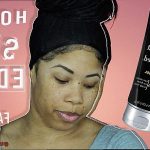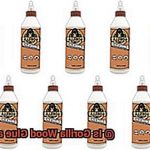Crafting enthusiasts and DIY lovers alike have long relied on hot glue sticks for their adhesive prowess. But what about using them in the kitchen or for food-related projects? Enter Gorilla Hot Glue Sticks, a brand that has caught our attention.
In this blog post, we’ll dive deep into the safety of Gorilla Hot Glue Sticks when it comes to food use.
As conscientious consumers, we must prioritize the safety of anything that comes into contact with our precious edibles. While Gorilla Hot Glue Sticks are known for their impressive bonding abilities, doubts linger about their suitability for food applications.
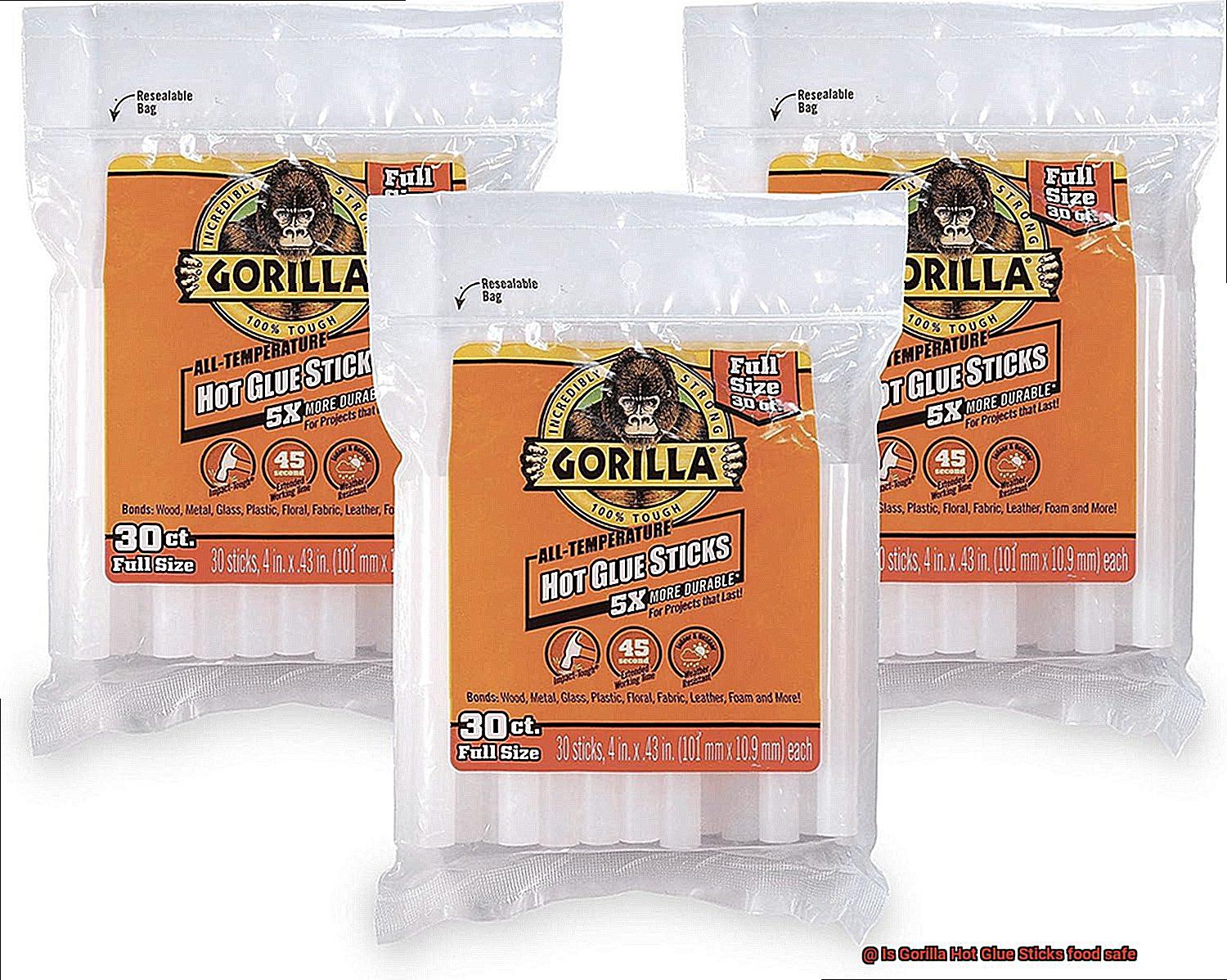
Can they be trusted to seal packaging or create food-grade decorations? Let’s embark on a journey through available information and evidence to uncover the truth.
First and foremost, let’s explore the composition of these glue sticks, as it plays a crucial role in determining their food safety. Primarily made from thermoplastic polymers like ethylene-vinyl acetate (EVA), Gorilla Hot Glue Sticks possess formidable adhesive properties. However, they also contain additives such as waxes, resins, and stabilizers – elements that might raise eyebrows when it comes to potential toxicity if exposed to food.
To truly understand whether Gorilla Hot Glue Sticks are safe for food use, we need to consult research and evidence. Unfortunately, studies specifically evaluating their direct contact with food are few and far between. Nonetheless, we can draw insights from existing research on similar adhesive compositions and corresponding food safety regulations.
While EVA-based glue sticks are generally considered safe for incidental contact with food, they aren’t recommended for direct packaging or prolonged exposure to edible items. This caution stems from concerns about chemical migration – the possibility of plasticizers or residual solvents transferring from the glue stick to the food, posing potential health risks if ingested.
While these risks call for vigilance, there are ways to mitigate them. For instance, using Gorilla Hot Glue Sticks to create non-direct food contact decorations or seal non-edible packaging can strike a balance between crafting and food safety. Additionally, applying a protective barrier like clear food-grade coatings can further minimize the chances of chemical migration.
Ultimately, when it comes to safeguarding our food, it’s wise to prioritize materials explicitly designed and regulated for food contact. Opting for FDA-approved glues or heat-resistant food sealants
What are Gorilla Hot Glue Sticks?
Contents
- 1 What are Gorilla Hot Glue Sticks?
- 2 Potential Risks of Using Hot Glue Sticks with Food
- 3 FDA Regulations for Materials in Contact with Food
- 4 Is Non-Toxic Hot Glue Safe for Use with Food?
- 5 Alternatives to Hot Glue for Food-Related Projects
- 6 Tips for Creating a Barrier Between Hot Glue and Food
- 7 Conclusion
When it comes to creating strong and lasting bonds, you need an adhesive you can trust. That’s where Gorilla Hot Glue Sticks come in. Crafters, DIY enthusiasts, and professionals all rely on these glue sticks for their exceptional strength and versatility. In this article, we’ll explore the key features that make Gorilla Hot Glue Sticks a must-have tool in your adhesive arsenal.
Unyielding Strength:
Gorilla Hot Glue Sticks are renowned for their impressive strength. No matter if you’re working with paper, fabric, wood, plastic, or even metal, these glue sticks deliver a level of adhesion that can withstand the toughest challenges. Count on them to create bonds that not only endure but also stand the test of time.
Boundless Versatility:
One of the standout qualities of Gorilla Hot Glue Sticks is their versatility. They effortlessly adhere to a wide range of surfaces and materials, making them perfect for countless applications. From tackling home repairs and intricate crafting projects to handling industrial tasks, these glue sticks have got you covered.
Lightning-Fast Drying:
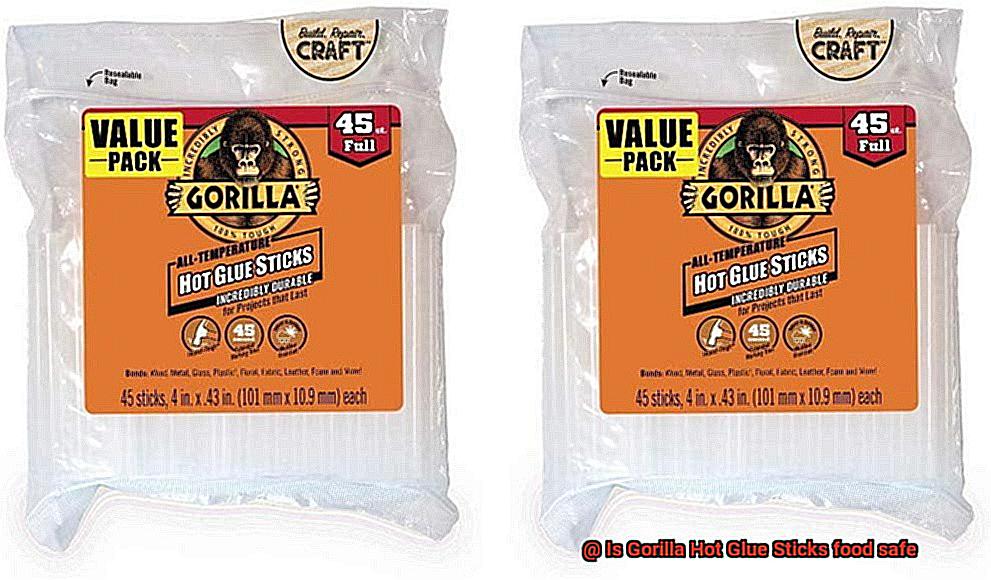
Time is precious when it comes to your projects, and Gorilla Hot Glue Sticks understand that. With their rapid-drying properties, waiting around for glue to set becomes a thing of the past. Within minutes of application, the glue solidifies, allowing you to keep working without significant delays. Get things done efficiently without compromising quality.
Tailored Sizes and Formulations:

Gorilla Hot Glue Sticks come in various sizes and formulations to meet your specific needs. Whether you require standard-size sticks for general applications or mini sticks for more intricate work, there’s a Gorilla Hot Glue Stick that fits the bill perfectly. Additionally, different temperature formulas ensure compatibility with various types of glue guns, providing you with seamless application.
Potential Risks of Using Hot Glue Sticks with Food
Hot glue sticks are a popular adhesive choice for crafting and DIY projects. However, their safety when it comes to using them with food is a topic that needs careful consideration. In this article, we will delve into the potential risks associated with using hot glue sticks with food, equipping you with the knowledge to make informed decisions.
Chemical Contamination:
Hot glue sticks are not intended for direct contact with food, as they may contain additives or chemicals that could be harmful if ingested. These materials, such as ethylene-vinyl acetate (EVA) or polyamide, have the potential to leach into food, posing health risks.
Toxic Fumes:
When hot glue sticks are applied, they release fumes that contain volatile organic compounds (VOCs). Inhaling these toxic fumes can be harmful, and if used near food preparation areas, the fumes can contaminate nearby food items. It is crucial to maintain a safe distance between hot glue application and any food-related activities.
Melting Glue:
Hot glue sticks are not designed to withstand high temperatures. When exposed to heat, the glue can melt and mix with food, leading to chemical contamination and ingestion of foreign substances. This risk becomes particularly significant when hot glue is used near warm or hot food items.
Deterioration Over Time:
Over time, the adhesive properties of hot glue sticks may deteriorate, increasing the likelihood of the glue detaching from the surface it was applied to. If this happens, the detached glue could end up in food, posing a choking hazard or potential digestive issues if consumed.
Unintended Additives:
Some hot glue sticks contain additives like colorants or flame retardants that are not intended for food contact. If these additives come into direct contact with food, they can leach into it, potentially causing health risks.
FDA Regulations for Materials in Contact with Food
The Food and Drug Administration (FDA) has regulations in place to ensure the safety of materials that come into contact with our favorite meals. Let’s delve into the sticky world of hot glue sticks and see what the FDA has to say.
The FDA is responsible for keeping our food and drugs safe in the United States. When it comes to materials in contact with food, like adhesives, they have specific regulations. These regulations state that materials used in food contact applications must be safe and suitable for their intended use.
Now, here’s where it gets interesting. The FDA has a list of substances that are generally recognized as safe (GRAS) for use in food contact materials. These substances have undergone extensive testing and are deemed safe for their intended purposes. However, hot glue sticks, including popular brands like Gorilla Hot Glue Sticks, are not specifically listed on the FDA’s GRAS list. But don’t worry just yet.
Let’s take a closer look at the composition of hot glue sticks. They’re typically made from a combination of synthetic polymers, resins, and additives. The exact composition may vary depending on the product, but some ingredients may raise concerns about their suitability for food contact. For example, certain additives or colorants may not be approved for direct food contact.
However, here’s the important thing to remember: hot glue sticks are usually used to bond non-food items together, like crafts or packaging materials. They’re not meant to come into direct contact with your mouthwatering dishes. So unless you plan on eating your craft project (which we don’t recommend), you should be in the clear.
Of course, accidents happen. If hot glue sticks do come into contact with your food accidentally, it’s best to play it safe and discard the affected food. It’s always better to be cautious when it comes to our health.
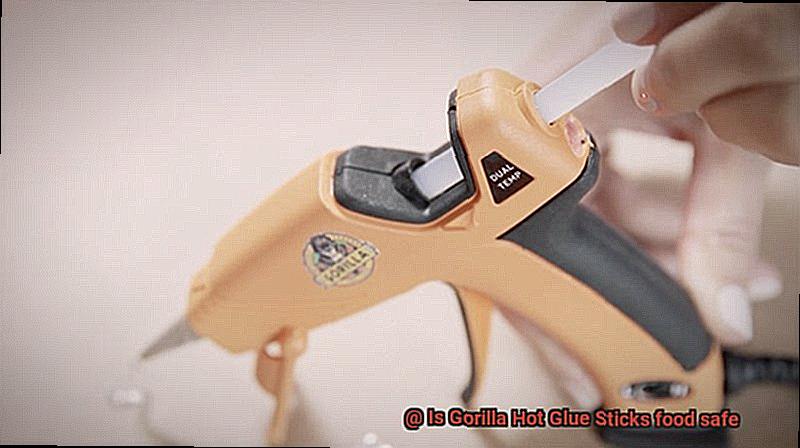
If you’re still concerned, there are alternative adhesive options specifically labeled as food safe that you can explore. And remember, always follow the manufacturer’s instructions and guidelines when using any adhesive product, including hot glue sticks.
Is Non-Toxic Hot Glue Safe for Use with Food?
In this article, we will delve into the world of non-toxic hot glue and explore why it is generally considered safe for use with edible items.
What Makes Non-Toxic Hot Glue Safe?
- Composition: Non-toxic hot glue sticks are made from synthetic polymers and additives that are deemed safe for use on various materials, including food packaging and containers. These glues do not contain harmful substances like lead, mercury, or phthalates, which can be dangerous if ingested.
- Non-Toxic Designation: The term “non-toxic” indicates that the glue is free from harmful chemicals and safe for general use. While this designation ensures that the glue is safe for incidental contact with food, it is important to note that non-toxic hot glue is not intended to be ingested directly.
Using Non-Toxic Hot Glue with Food:
- Avoid Direct Contact: To ensure food safety, it is crucial to prevent non-toxic hot glue from coming into direct contact with the edible portions of your food. Apply the glue to non-edible surfaces or use a barrier such as a food-safe liner or parchment paper.
- Full Drying and Curing: Allow the glue to fully dry and cure before it comes into contact with food. This ensures that any residual chemicals or odors have dissipated, further enhancing safety.
- Exercise Caution: While non-toxic hot glue is generally safe for use with food, it is always wise to exercise caution and use common sense. If you have any concerns about using hot glue with food, consult the manufacturer’s instructions or seek advice from a professional in the field.
Alternatives to Hot Glue for Food-Related Projects
Today, we’re diving into the world of alternatives to hot glue for your food-related projects. While hot glue is versatile and dries quickly, it’s important to exercise caution when using it with anything involving food. So, let’s explore some safe and reliable options that will have your creations sticking together beautifully.
First up, we have food-safe epoxy. This adhesive is specially formulated to be safe for use with food items, making it a top choice for many culinary creatives. It’s resistant to chemicals, moisture, and heat, providing a strong bond that won’t let you down. Plus, it’s commonly used in the food industry, so you know it has the seal of approval.
Next on the menu is food-grade silicone adhesive. Not only is silicone known for its flexibility and durability, but it also boasts excellent heat resistance. This makes it a trustworthy option for projects like cake stands or decorative food displays. Consider it your trusty sous-chef in the adhesive department.
If you’re looking for something temporary or working with lightweight materials, double-sided tape might just be your secret ingredient. Look for tape explicitly labeled as food safe – it’s often used in the food industry for packaging and sealing purposes. Just make sure it’s not too sticky so that you can remove it without leaving a trace.
Now, let’s talk about why using adhesives labeled as food safe is paramount for your food-related projects. The last thing you want is harmful substances leaching into your tasty treats. By opting for adhesives explicitly labeled as food safe or FDA-approved, you can ensure that your creations are not only visually appealing but also safe for consumption.
Remember to read those labels, my friends. Choose adhesives that prioritize your safety and the integrity of your food. Even when using these food-safe alternatives, it’s still wise to minimize direct contact between the adhesive and the food. Wrap it up in food-safe packaging or place it on a food-safe surface to be extra cautious.
Tips for Creating a Barrier Between Hot Glue and Food
Hot glue is a versatile tool for crafting, but when it comes to projects involving food, it’s essential to take precautions to ensure safety. In this comprehensive guide, we will explore five effective methods for creating a barrier between hot glue and food, allowing you to enjoy your creations worry-free.
Utilize Food-Safe Materials:
To create a reliable barrier between hot glue and food, opt for food-safe materials like wax paper, parchment paper, or aluminum foil. These reliable options can be placed between the hot glue and the food, preventing direct contact. Not only are they safe for food use, but they can also be easily removed once the glue has cooled and hardened.
Embrace Food-Grade Silicone Molds or Wrappers:
An excellent alternative is to employ food-grade silicone molds or wrappers to encase the hot glue. These specially designed molds and wrappers are perfectly safe for food contact and provide a protective layer between the glue and the edible item. Simply pour the hot glue into the mold or wrap it around your desired object, and after cooling and hardening, remove it effortlessly.
Implement Non-Toxic Physical Barriers:
When needing a physical barrier between hot glue and food, consider non-toxic materials such as plastic wrap or aluminum foil. These materials can be conveniently positioned between the hot glue and the food, effectively preventing any direct contact. Verify that your chosen materials are suitable for food use and easily removable once your project is complete.
Explore Food-Safe Alternatives:
Instead of resorting to using hot glue directly on edible items like cakes or cookies, explore safer alternatives like toothpicks or bamboo skewers. These alternatives can be easily inserted into the food without any safety concerns, eliminating the need for hot glue altogether while still achieving your desired results.
Practice Excellent Workspace Hygiene:
Maintaining a clean and organized workspace is crucial when working with hot glue near food. This practice reduces the risk of accidental contamination. Be mindful of any potential drips or spills, and maintain a safe distance between the hot glue and the food to ensure the utmost safety.
By5c2aVTohI” >
Conclusion
In conclusion, the question of whether Gorilla Hot Glue Sticks are food safe demands careful consideration. These glue sticks are certainly renowned for their impressive adhesive properties, but doubts linger regarding their suitability for use with food.
While there is limited research specifically on the direct contact of Gorilla Hot Glue Sticks with food, we can glean insights from studies on similar adhesive compositions and corresponding food safety regulations. EVA-based glue sticks, like Gorilla Hot Glue Sticks, are generally deemed safe for incidental contact with food. However, caution is advised when it comes to direct packaging or prolonged exposure to edible items due to concerns surrounding chemical migration.
To mitigate potential risks, it is recommended to utilize Gorilla Hot Glue Sticks for non-direct food contact purposes such as decorations or sealing non-edible packaging. For added protection against chemical migration, applying a clear food-grade coating can further minimize any chances.
When it comes to safeguarding our precious edibles, it is wise to prioritize materials that have been explicitly designed and regulated for food contact. Opting for FDA-approved glues or heat-resistant food sealants would be a prudent choice in this regard.
Ultimately, while Gorilla Hot Glue Sticks may possess exceptional bonding abilities, exercising caution when using them near food is paramount.



